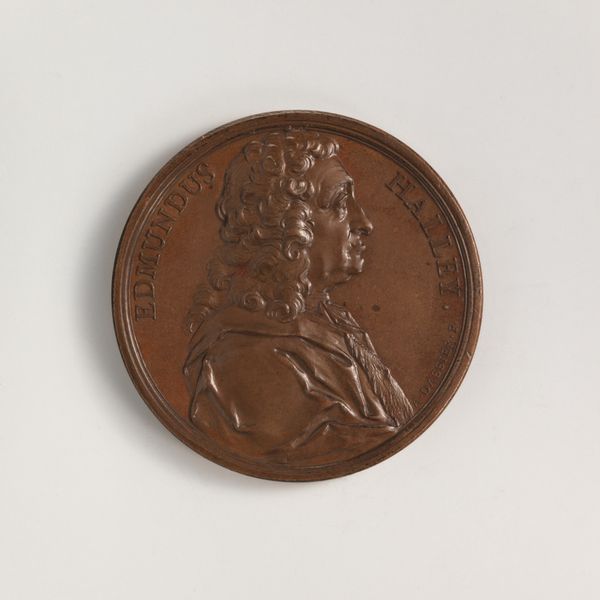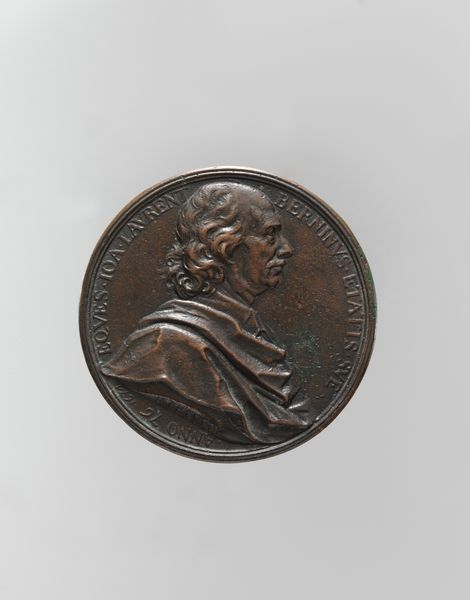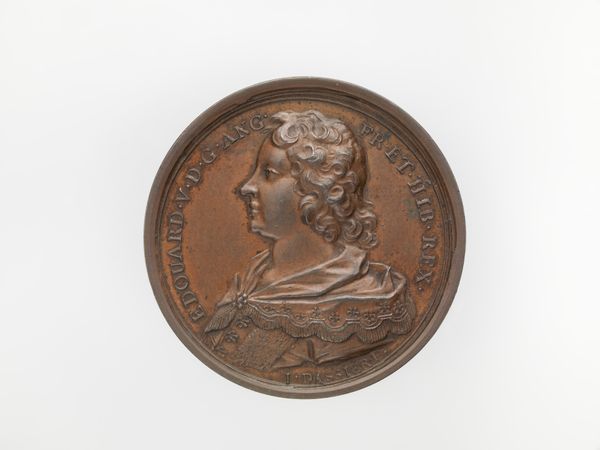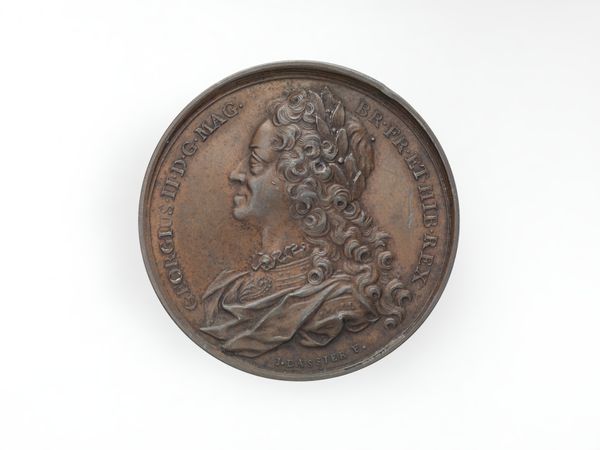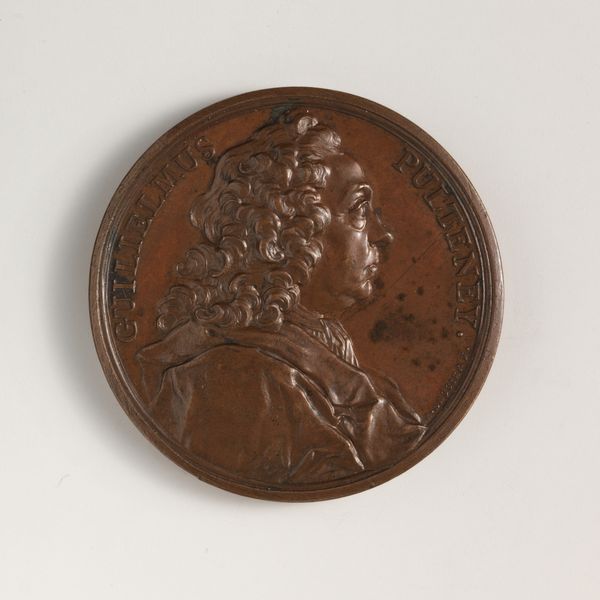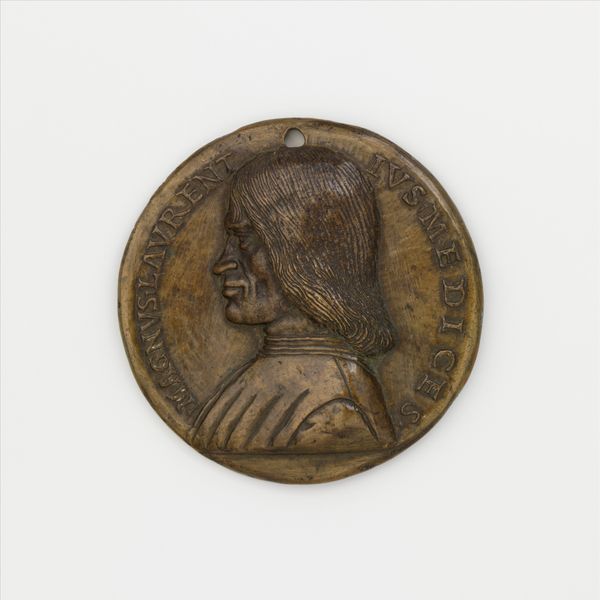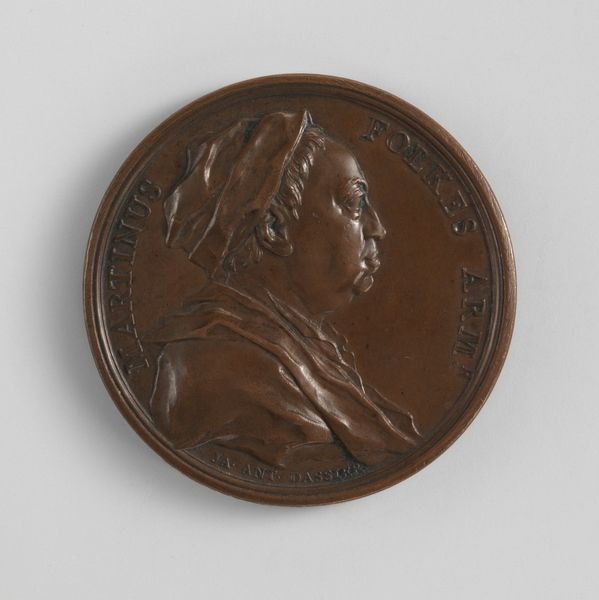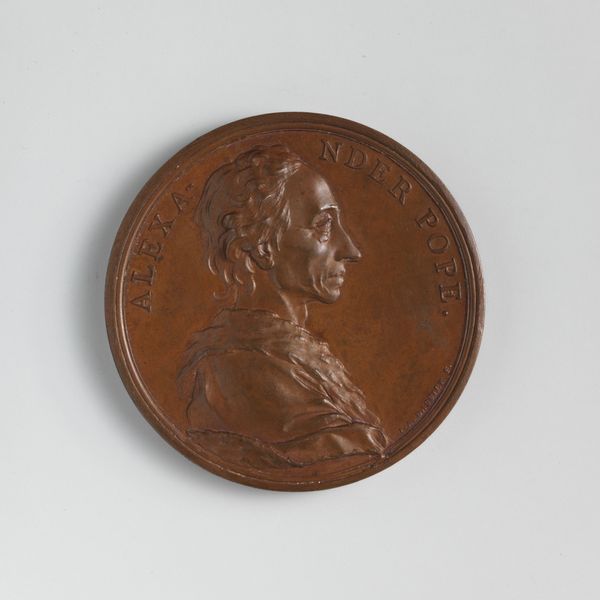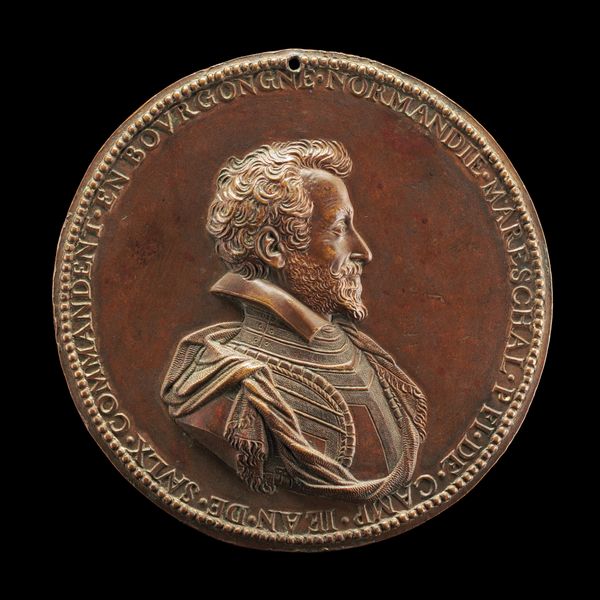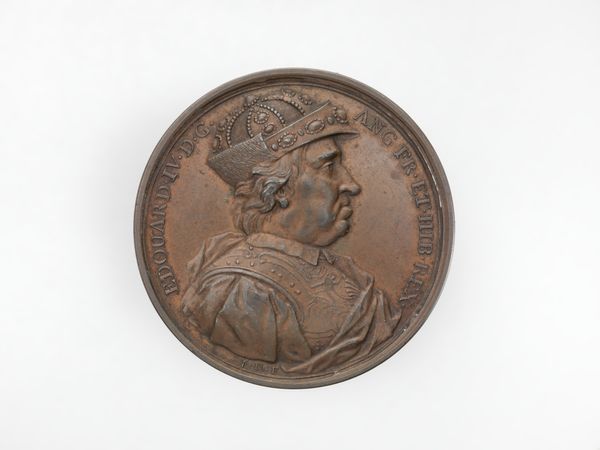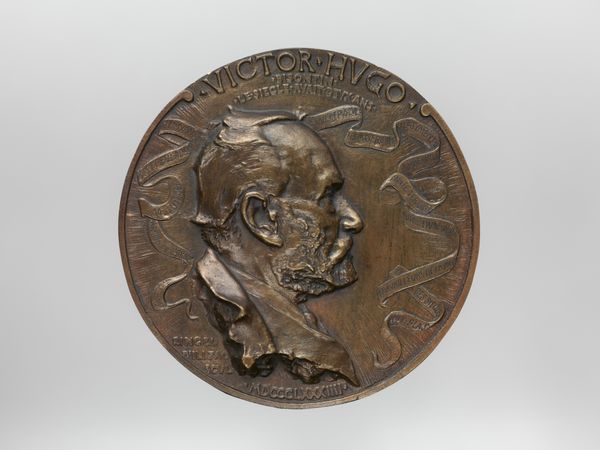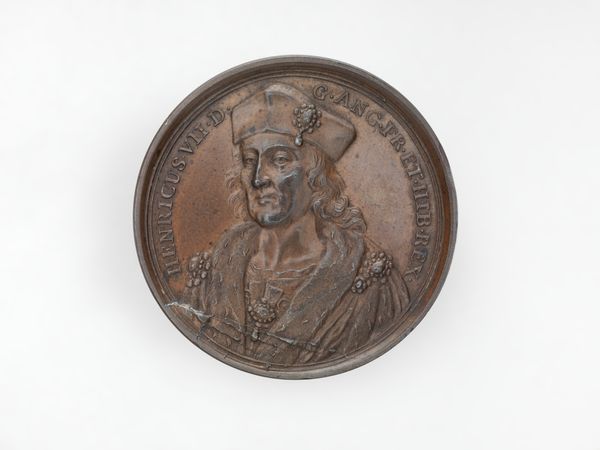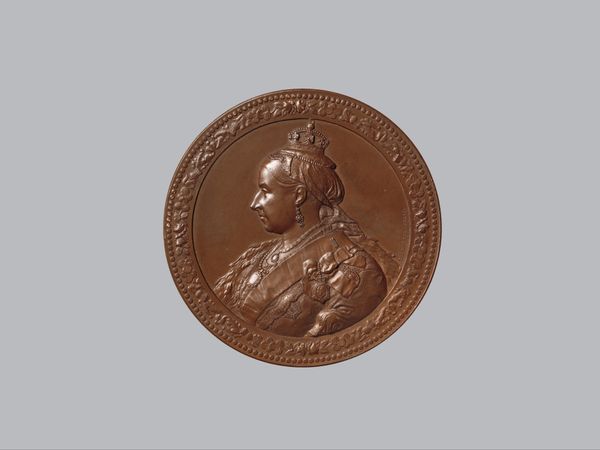
bronze, sculpture
#
portrait
#
medal
#
bronze
#
11_renaissance
#
sculpture
#
decorative-art
#
italian-renaissance
Dimensions: Diameter: 1 7/8 in. (48 mm)
Copyright: Public Domain
Editor: This is "Cardinal Alessandro Farnese," a bronze sculpture created sometime between 1570 and 1580. It feels so immediate, yet contained within the circular form. How would you interpret the piece? Curator: Consider the materiality of bronze. Casting like this was incredibly labor-intensive. It signifies wealth and power, of course, reflecting Farnese's position in the Church. Think about the social implications: the mining, the smelting, the artisan workshops—each step embedded with the energy and labor of many. Editor: That’s interesting. So, it’s not just a portrait but a record of production? Curator: Exactly! And a carefully controlled one at that. Notice the inscription, literally framing the Cardinal. It is dictating and controlling its message to its viewers across the Italian peninsula and the world at that time. Consider bronze’s permanence and relative ubiquity for the proliferation of artistic works, for political agenda. How might mass production influence art's function? Editor: So, instead of solely appreciating its aesthetic value, we should examine how this object operated within a network of power and labor. How was this consumed? Was this presented to others as an exchange of influence? Curator: Precisely. How does its existence then and our continued gaze on it now reflect systems of value and historical practice? Editor: I see it now. It really changes my perspective. I’ll be paying more attention to these processes now, and I wonder how this applies to our contemporary time? Curator: Indeed, recognizing the means and contexts of its creation exposes its participation in broader social, political, and economic frameworks. Think critically about any artistic creation and it always leads you to its purpose and position within a structured economy.
Comments
No comments
Be the first to comment and join the conversation on the ultimate creative platform.
